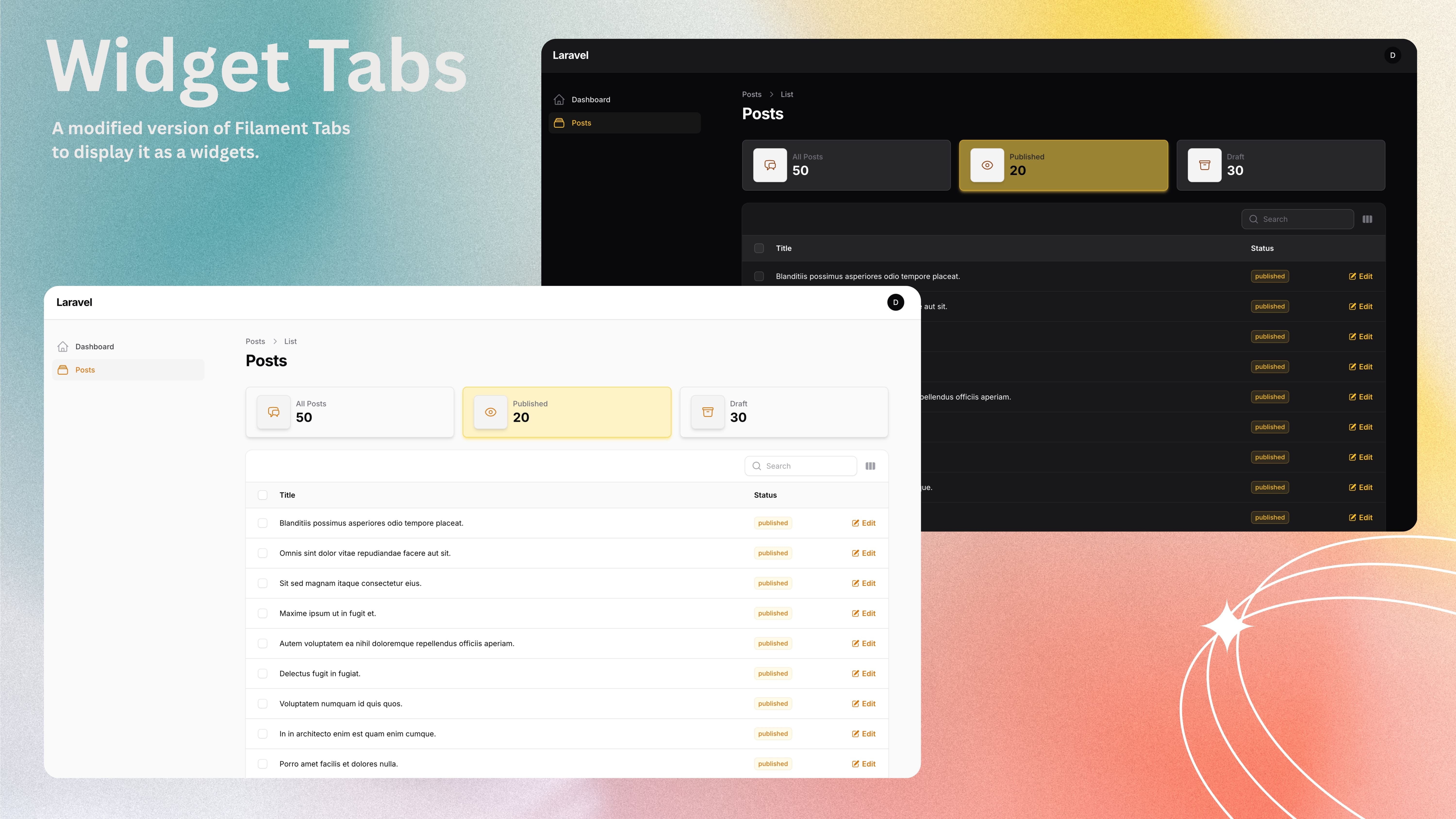
#Installation
[!WARNING] This plugin currently supports Filament v3 only due to its reliance on Tailwind v3. Filament v4 support is not yet available.
You can install the package via composer:
composer require shkubu18/filament-widget-tabsIn an effort to align with Filament's theming methodology you will need to use a custom theme to use this plugin.
[!IMPORTANT] If you have not set up a custom theme and are using a Panel follow the instructions in the Filament Docs.
- Import the plugin's stylesheet in your theme's css file.
@import '<path-to-vendor>/shkubu18/filament-widget-tabs/resources/css/widget-tabs.css';- Add the plugin's views to your
tailwind.config.jsfile.
content: [ '<path-to-vendor>/shkubu18/filament-widget-tabs/resources/**/*.blade.php',]#Publishing Views
If you need to customize the views, you can publish them with:
php artisan vendor:publish --tag=filament-widget-tabs-views#Usage
Filament Widget Tabs works similarly to Filament Tabs, but displays each tab as a “widget” that can filter your resource’s table with a single click.
#Add the HasWidgetTabs trait
Add the HasWidgetTabs trait to your Filament resource page.
#Implement the getWidgetTabs() method
Define your widget tabs by implementing the getWidgetTabs() method in your page class.
Each tab is created with the WidgetTab::make() component, allowing you to specify label, icon, value, and filtering
behavior:
use App\Enums\PostStatusEnum;use Illuminate\Database\Eloquent\Builder;use Filament\Resources\Pages\ListRecords;use Shkubu\FilamentWidgetTabs\Concerns\HasWidgetTabs;use Shkubu\FilamentWidgetTabs\Components\WidgetTab; class ListPosts extends ListRecords{ use HasWidgetTabs; public function getWidgetTabs(): array { return [ 'all' => WidgetTab::make() ->label('All Posts') ->icon('heroicon-o-chat-bubble-left-right') ->value(Post::count()), 'published' => WidgetTab::make() ->label('Published') ->icon('heroicon-o-eye') ->value(Post::where('status', PostStatusEnum::PUBLISHED)->count()) ->modifyQueryUsing(fn (Builder $query): Builder => $query->where('status', PostStatusEnum::PUBLISHED)), 'drafts' => WidgetTab::make() ->label('Drafts') ->icon('heroicon-o-archive-box') ->value(Post::where('status', PostStatusEnum::DRAFT)->count()) ->modifyQueryUsing(fn (Builder $query): Builder => $query->where('status', PostStatusEnum::DRAFT)), ]; }}That's all you need to get started with Widget Tabs! Your resource list page will now display beautiful widget-style tabs that filter your table data just like default Filament tabs, but with the added benefit of displaying important data values within each tab widget.
#Features
#Auto-loading Default Active Widget Tab
By default, widget tabs will not automatically load a default active widget tab when the page mounts. If you want to
enable automatic loading of the default widget tab, you can override the shouldAutoLoadDefaultActiveWidgetTab method
in your page class:
protected function shouldAutoLoadDefaultActiveWidgetTab(): bool{ return true; // Enable auto-loading of the default active widget tab}#Widget Tabs Layout
You can customize how many widget tabs appear in each row by overriding the getWidgetsPerRow() method in your page
class:
protected function getWidgetsPerRow(): int|array{ return 4; // Default is 3 widgets per row}It is also possible to specify an array of breakpoints for different display sizes:
protected function getWidgetsPerRow(): int|array{ return ['sm' => 2, 'md' => 3, 'lg' => 4];}#Labels
Add a descriptive label to your widget tab:
WidgetTab::make() ->label('Published Posts')#Icons
Add an icon to visually enhance your widget tab:
WidgetTab::make() ->icon('heroicon-o-document-text')You can also specify the icon size:
use Filament\Support\Enums\IconSize; WidgetTab::make() ->icon('heroicon-o-document-text') ->iconSize(IconSize::Large)#Values
Display a count or other relevant value in your widget tab:
WidgetTab::make() ->value(Post::count())You can control the decimal precision of numeric values:
WidgetTab::make() ->label('Average Rating') ->value(Post::avg('rating')) ->precision(2) // Will display with 2 decimal places, e.g., "4.75"#Percentages
When enabled, the percentage method formats your value as a percentage, displaying it with a % symbol instead of as a regular number:
WidgetTab::make() ->value(25) ->percentage() // This will display as "25%" instead of "25"You can control the decimal precision of percentage values independently from regular numeric values, giving you fine-grained control over how different types of data are displayed:
WidgetTab::make() ->label('Published Ratio') ->value(fn (): float => (Post::where('status', 'published')->count() / Post::count()) * 100) ->percentage() ->percentagePrecision(1) // Will display as "25.4%" instead of "25%"#Theming
Widget Tabs supports advanced theming with pre-built color schemes and gradients.
#Pre-built Color Schemes
Apply different color themes to your widget tabs:
WidgetTab::make() ->label('Success Posts') ->value(Post::where('status', 'published')->count()) ->success() WidgetTab::make() ->label('Failed Posts') ->value(Post::where('status', 'failed')->count()) ->danger() WidgetTab::make() ->label('Draft Posts') ->value(Post::where('status', 'draft')->count()) ->info() //...Preview:
| Success Theme | Danger Theme | Info Theme |
|---|---|---|
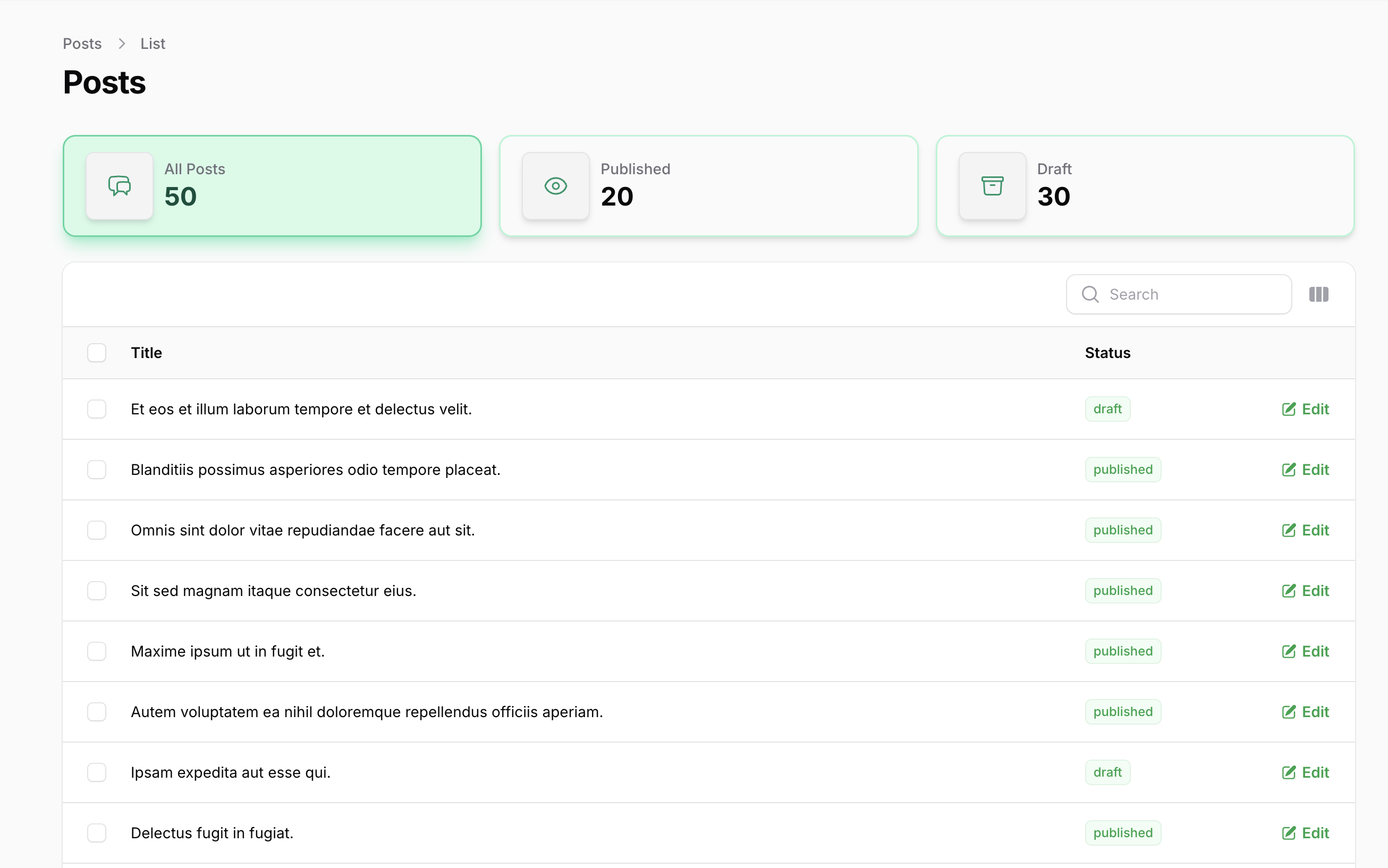 |
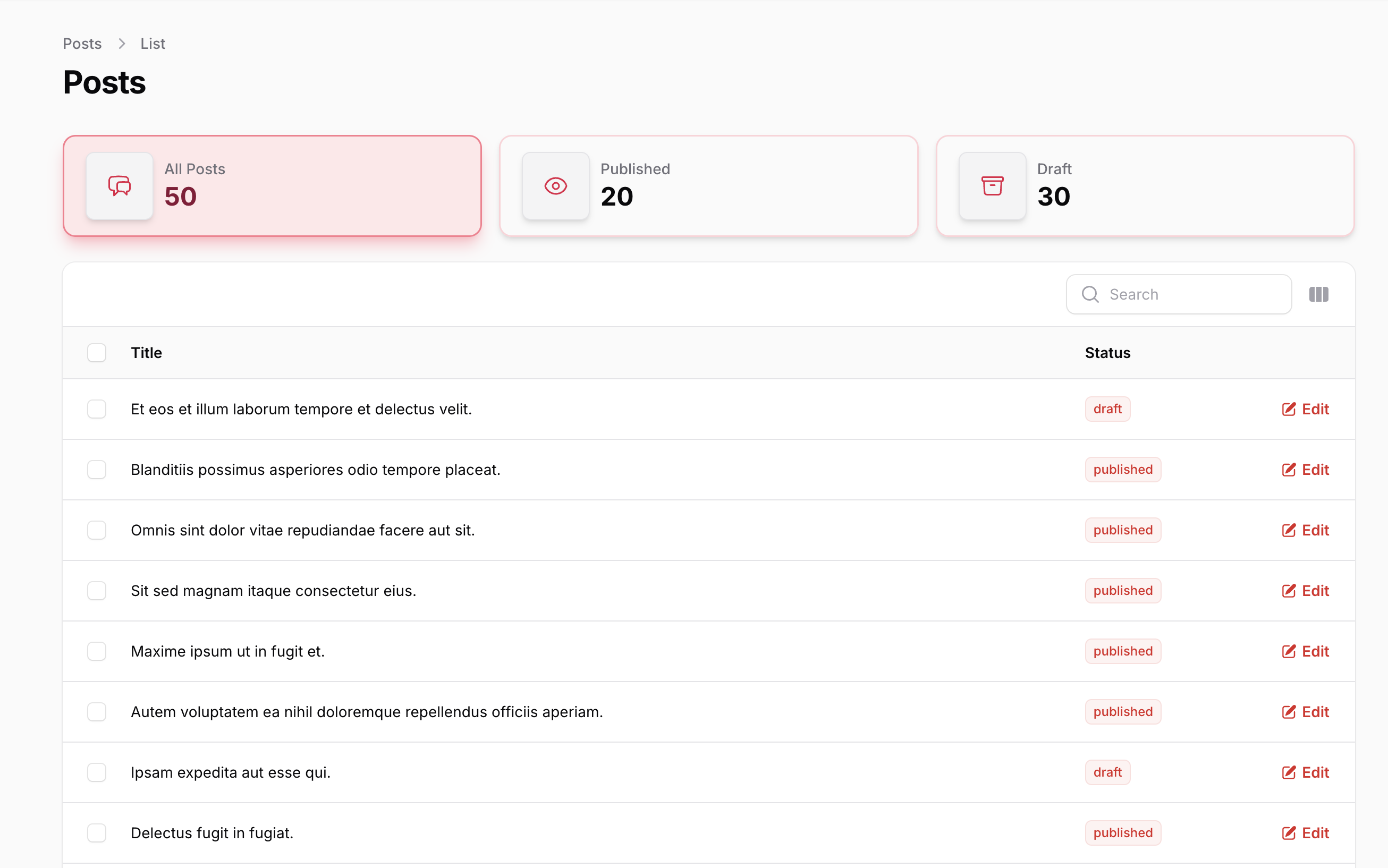 |
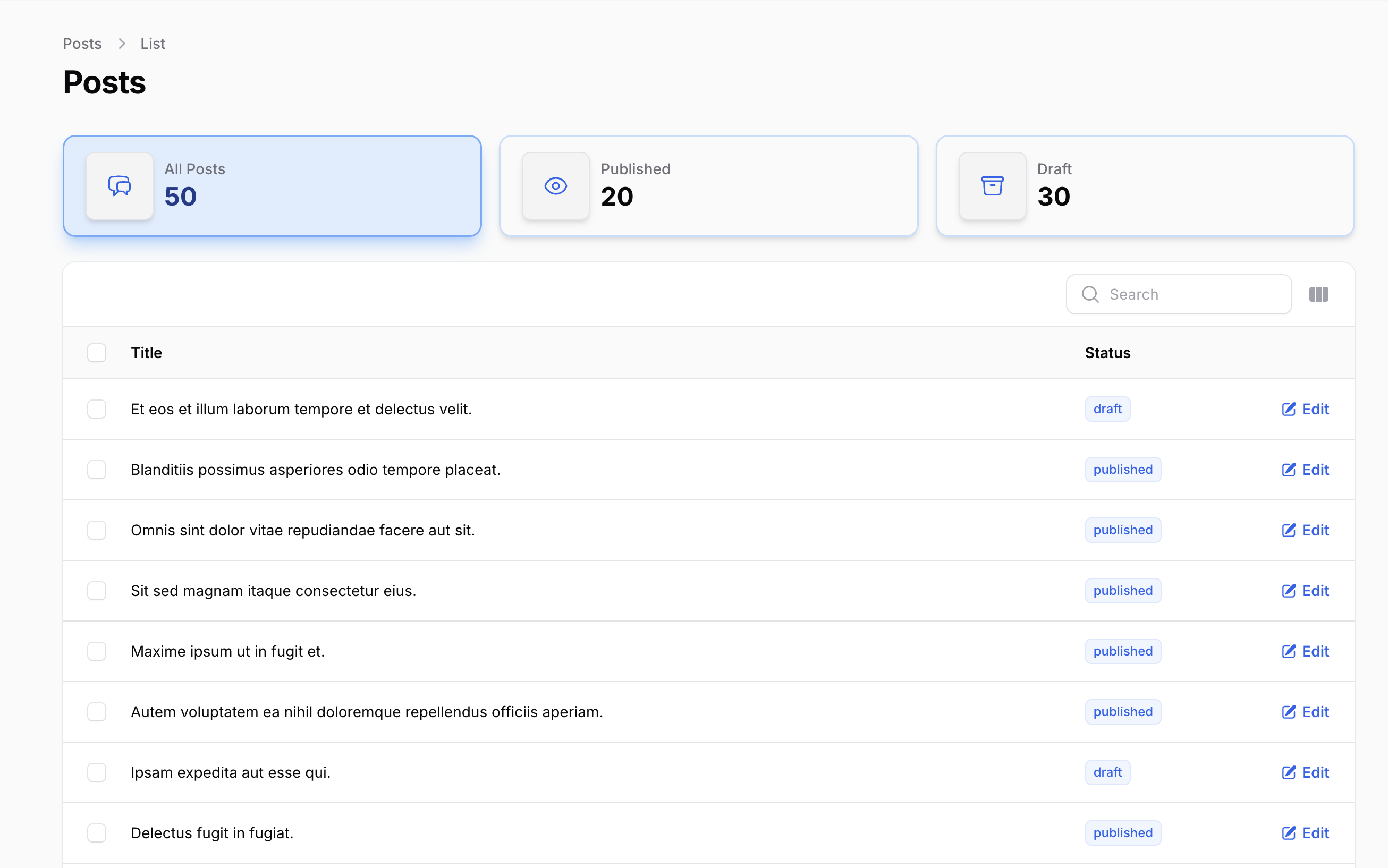 |
| Warning Theme | Secondary Theme | |
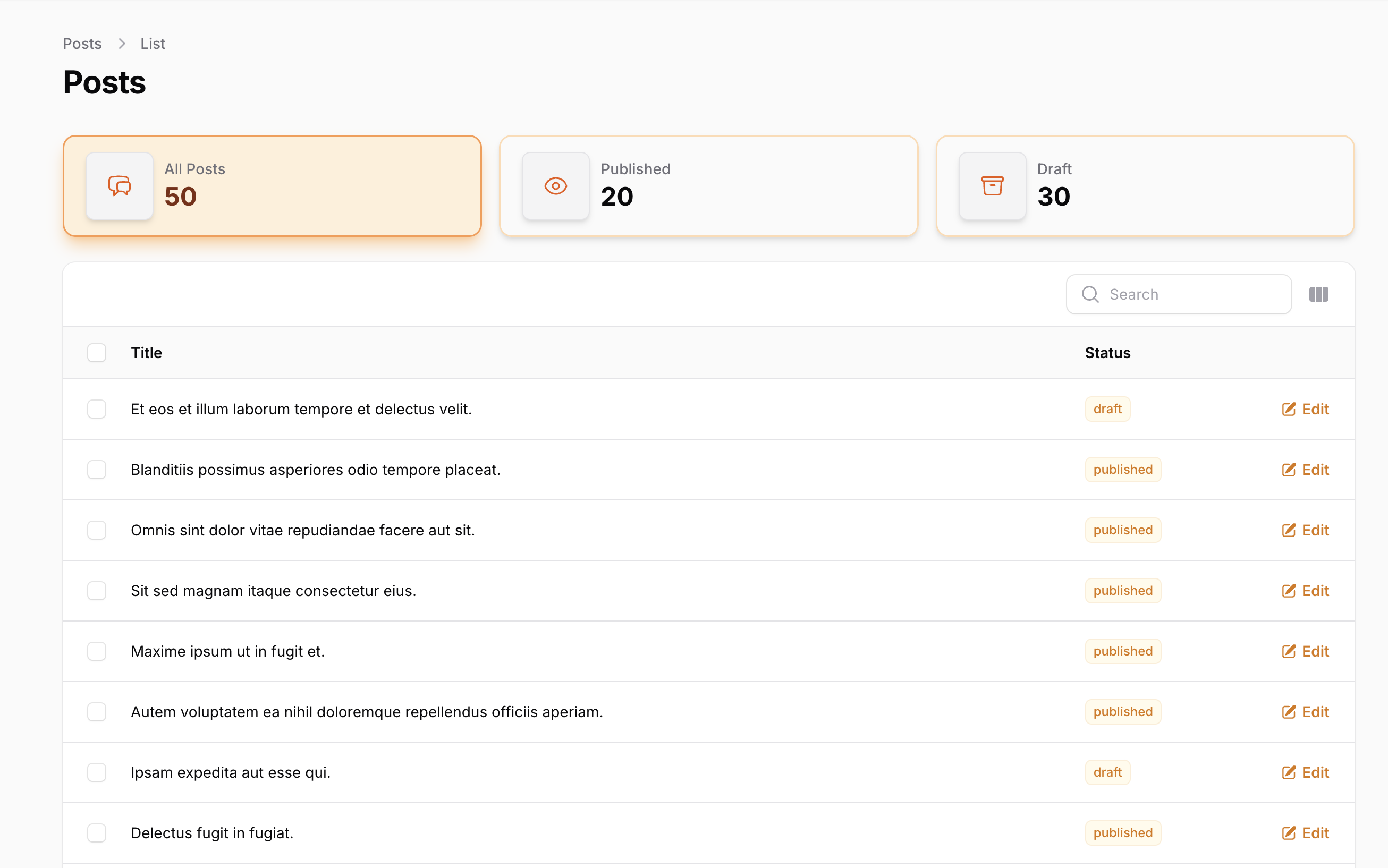 |
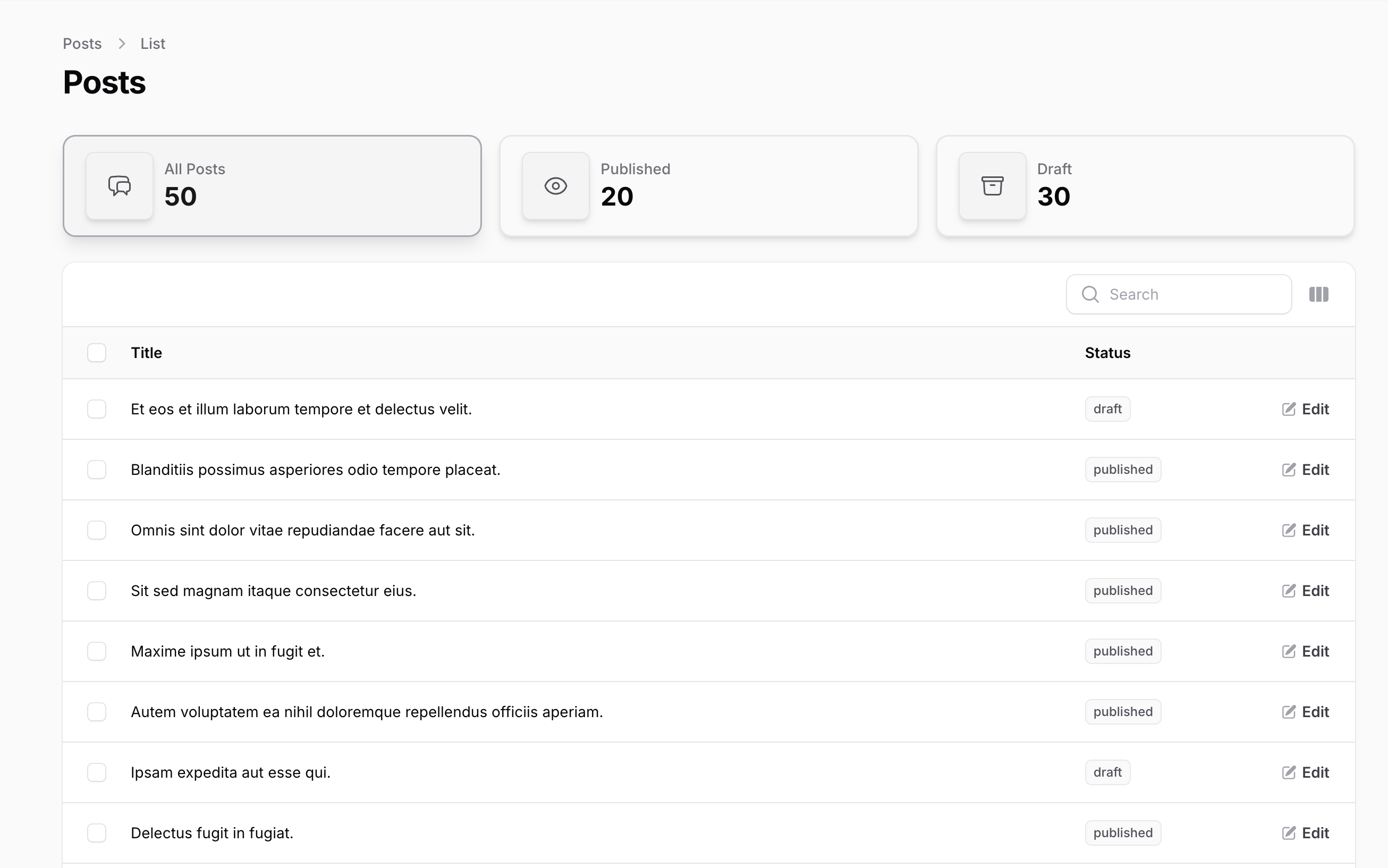 |
You can also use the generic theme() method with enum or string values:
use Shkubu\FilamentWidgetTabs\Enums\WidgetTabTheme; WidgetTab::make() ->theme(WidgetTabTheme::Success) // Using enum#Gradient Effects
Add beautiful gradient backgrounds to your widget tabs:
WidgetTab::make() ->label('Premium Posts') ->value(Post::where('is_premium', true)->count()) ->secondary() ->gradient() // Adds gradient effectPreview:
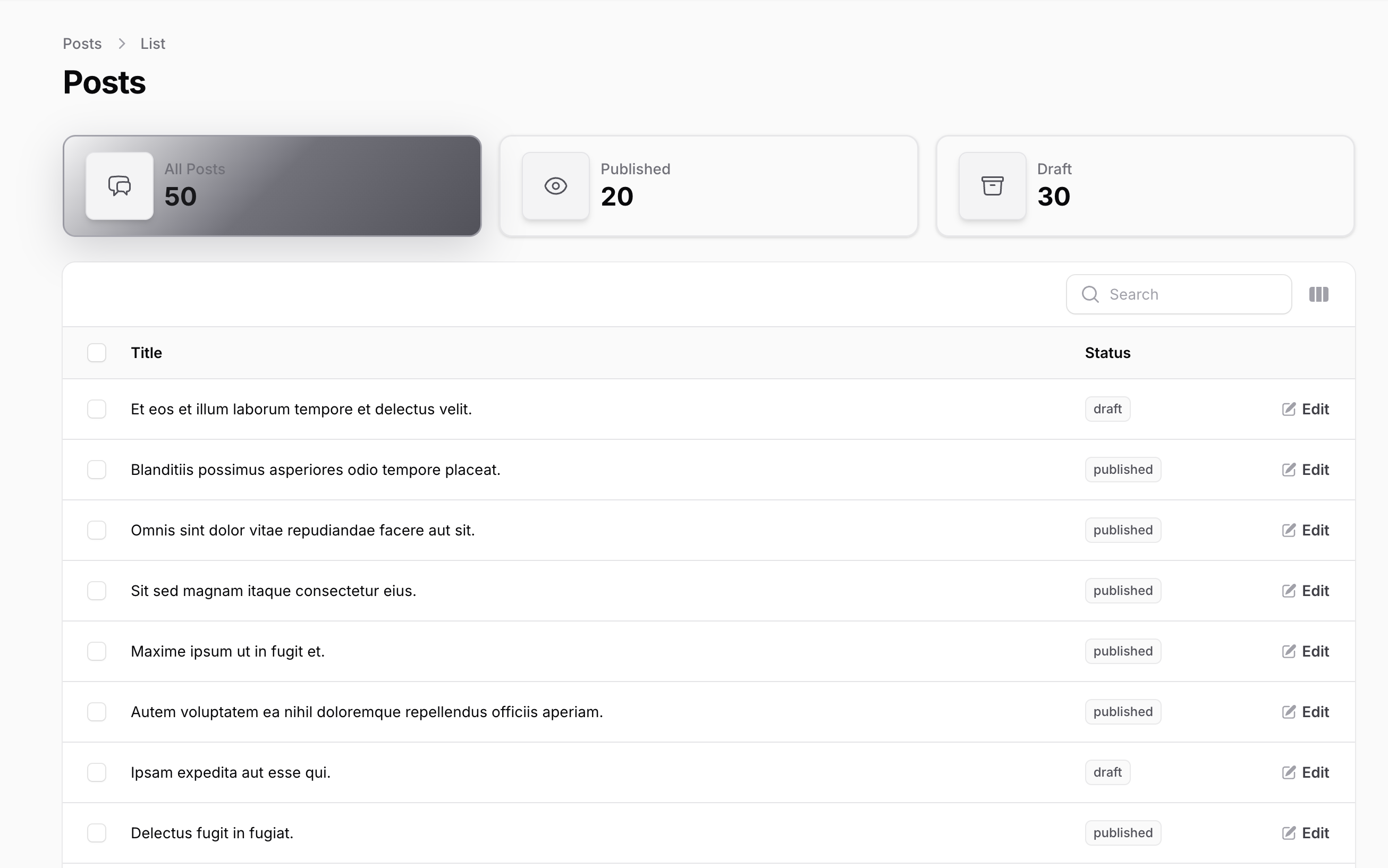
#Custom Theme Classes
For advanced customization, you can add custom CSS classes:
WidgetTab::make() ->label('Custom Styled') ->value(100) ->customThemeClasses([ 'custom-shadow', 'custom-border', 'my-special-theme' ]) // Or use a closure for dynamic classesWidgetTab::make() ->customThemeClasses(fn () => [ 'dynamic-class-' . now()->format('Y'), 'user-role-' . auth()->user()->role ])#Available Themes
- Secondary: Neutral gray theme for secondary content
- Success: Green theme for positive states and success messages
- Warning: Yellow/orange theme for warnings and attention
- Danger: Red theme for errors and critical states
- Info: Blue theme for informational content
#Extra Attributes
Add extra HTML attributes to your widget tab:
WidgetTab::make() ->extraAttributes(['attribute' => 'value'])#Query Modification
Filter the resource table based on the selected tab:
WidgetTab::make() ->modifyQueryUsing(fn (Builder $query): Builder => $query->where('status', 'published'))Or use the shorter query() method:
WidgetTab::make() ->query(fn (Builder $query): Builder => $query->where('status', 'published'))#Contributing
Please see CONTRIBUTING for details.
#Security Vulnerabilities
Please review our security policy on how to report security vulnerabilities.
#Credits
#License
The MIT License (MIT). Please see License File for more information.
Data is a passionate developer who loves working with Laravel, PHP, and modern web technologies. He enjoys building scalable applications and is particularly enthusiastic about Filament – it's made creating beautiful admin panels so much fun! Always curious and learning, he’s on a journey to level up his coding skills, while solving interesting problems along the way.

